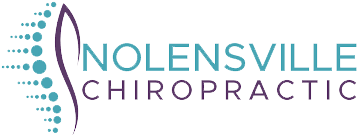What to Expect During Your First Chiropractic Visit
For individuals considering chiropractic care for the first time, understanding the evaluation and treatment process can help reduce uncertainty and ensure a more comfortable experience. Whether seeking care for back pain, neck discomfort, injury recovery, or general musculoskeletal health support, knowing what to expect during an initial chiropractic consultation helps patients prepare appropriately and make informed decisions about their healthcare.
This comprehensive guide outlines the typical first visit process to help new patients feel confident and prepared when scheduling their initial chiropractic evaluation.
Pre-Visit Preparation and Scheduling
Most chiropractic offices facilitate appointment scheduling through multiple channels including phone contact and online booking systems. New patients typically receive intake documentation to complete prior to their visit, which includes health history questionnaires, symptom assessments, and insurance information.
Completing intake forms in advance allows practitioners to review patient information beforehand, enabling more efficient use of appointment time and more targeted initial evaluations. Patients who cannot complete forms early can typically do so upon arrival, though arriving 10-15 minutes early is recommended to accommodate this process.
Initial Consultation Process
The first appointment begins with a comprehensive consultation where the chiropractor conducts a detailed interview covering:
Chief Complaint Assessment: Discussion of primary symptoms, their onset, duration, and characteristics.
Medical History Review: Evaluation of past injuries, surgeries, medications, and other relevant health conditions.
Lifestyle Factor Analysis: Assessment of occupational demands, physical activities, and daily habits that may contribute to musculoskeletal issues.
Treatment Goals: Understanding patient expectations and desired outcomes from chiropractic care.
This consultation phase allows practitioners to gather essential information for developing appropriate treatment strategies while providing patients opportunities to ask questions and express concerns about their condition or proposed care.
Physical Examination Components
Following the consultation, a comprehensive physical examination evaluates musculoskeletal function and identifies areas requiring intervention. Standard examination components include:
Postural Analysis: Assessment of spinal alignment and overall body positioning in standing and seated positions.
Range of Motion Testing: Evaluation of joint mobility and movement restrictions in affected areas.
Orthopedic and Neurological Testing: Specific tests to assess nerve function, muscle strength, and joint stability when clinically indicated.
Palpation: Manual examination of joints, muscles, and soft tissues to identify areas of tension, misalignment, or inflammation.
These examination procedures help practitioners identify joint restrictions, muscular imbalances, and other factors contributing to patient symptoms while determining whether chiropractic care is appropriate for the presenting condition.
Diagnostic Imaging Considerations
Depending on examination findings and clinical presentation, practitioners may recommend diagnostic imaging such as digital X-rays to:
Evaluate Structural Integrity: Rule out underlying pathology or structural abnormalities.
Assess Alignment: Identify specific areas of spinal misalignment or joint dysfunction.
Guide Treatment Planning: Develop more precise intervention strategies based on imaging findings.
Not all patients require imaging studies during their initial visit. When recommended, practitioners explain the clinical rationale and review results with patients to ensure understanding of findings and their implications for treatment.
Treatment Plan Development
After completing the consultation and examination, practitioners develop individualized treatment plans based on:
Clinical Findings: Results from physical examination and any diagnostic studies performed.
Treatment Frequency: Recommended visit schedule based on condition severity and expected response.
Intervention Methods: Specific techniques and therapies appropriate for the patient's condition.
Expected Outcomes: Realistic expectations for improvement based on clinical experience and evidence.
Treatment plans emphasize individualized care rather than standardized protocols, with recommendations tailored to each patient's specific needs, comfort level, and treatment goals.
Initial Treatment Considerations
Many patients receive initial treatment during their first visit when clinically appropriate. Common first-visit interventions may include:
Spinal Manipulation: Manual adjustments to restore joint mobility and reduce movement restrictions.
Electrical Muscle Stimulation: Therapeutic electrical currents to address muscle tension and promote relaxation.
Mechanical Traction: Spinal decompression techniques for pressure-related symptoms.
Laser Therapy: Low-level laser treatments to support tissue healing and reduce inflammation.
In some cases, practitioners may defer treatment until a subsequent visit, particularly when additional evaluation or imaging review is needed. Patients receive clear explanations regarding treatment timing and rationale.
Common First Visit Questions
Pain During Treatment: Most patients experience relief following chiropractic adjustments. Some may notice mild soreness similar to post-exercise discomfort, which typically resolves quickly.
Appropriate Attire: Comfortable, loose-fitting clothing allows for easier examination and treatment while maintaining patient modesty.
Referral Requirements: Most jurisdictions allow direct access to chiropractic care without physician referral, though insurance coverage may vary.
Visit Duration: Initial appointments typically require 45-60 minutes to accommodate comprehensive evaluation and potential initial treatment.
Professional Standards and Patient Communication
Quality chiropractic care emphasizes patient education, informed consent, and transparent communication throughout the evaluation and treatment process. Practitioners should clearly explain examination findings, treatment recommendations, and expected outcomes while addressing patient questions and concerns.
Effective patient-provider communication ensures that patients understand their condition, treatment options, and role in the recovery process, promoting better treatment compliance and outcomes.
Making Informed Healthcare Decisions
The first chiropractic visit provides essential information for patients to make informed decisions about their care. Patients should feel comfortable asking questions about their condition, proposed treatments, and expected outcomes before committing to ongoing care.
Quality practitioners respect patient autonomy and provide honest assessments of whether chiropractic care is appropriate for specific conditions, referring to other healthcare providers when necessary.
Scheduling Your Initial Consultation
When considering chiropractic care, individuals should research qualified practitioners in their area and verify appropriate licensing and credentials. Initial consultations provide opportunities to assess practitioner communication style, treatment philosophy, and clinic environment to ensure good patient-provider fit.
Taking the first step toward chiropractic evaluation can help address musculoskeletal concerns and support overall health goals when conservative manual therapy approaches are appropriate for the presenting condition.













